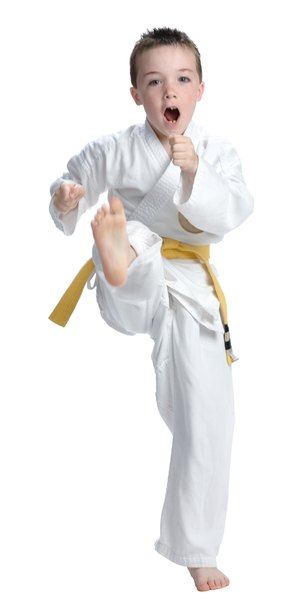Requirements for a Yellow Belt in Jiujitsu

Many martial arts focus on striking, but jiu-jitsu also emphasizes body movements, blocking, holding, choking and joint locking techniques. The yellow belt is the next step above the white belts worn by new students. The United States Ju-Jitsu Federation has two classes of yellow belts. There is no age requirement for either.
Two Months to Jukyu
A white belt has to put in at least two months of training to reach the Jukyu level. The students must show they can do simple sliding step body movements and footwork. Some of the jiu-jitsu moves a Jukyu must know include a knife hand strike, a hammerfist strike and a sweep throwing technique.
Three More to Kukyu
After three months at the Jukyu level, the student can advance to Kukyu. Those students must demonstrate 90- and 180-degree body pivoting, front and side kicking techniques and outside and inside blocking techniques. They must be able to perform a palm heel strike, elbow strike and a pressing wrist lock among other moves.
Your Best Self Defense
Jukyu students are expected to know basic self defense techniques for a single punch, single wrist grab and single lapel grab. The movements are graded on form, speed and power. Each technique must include a block and counter with a throw or take-down, and finished with a control hold or strike. The Kukyu test is similar, but those students are expected to complete the test with more skill.
Beyond Skill
Character plays a role in yellow belts as well. They only go to students who keep up their attendance and training obligations, follow dojo rules and procedures, and maintain proper hygiene. They're also expected to learn the origins, history and development of jiu-jitsu and the correct pronunciation of its Japanese terms. A Jukyu should know words like teacher (sensei) and bow (rei), while a Kukyu might need to know phrases such as place of honor (kamiza).
